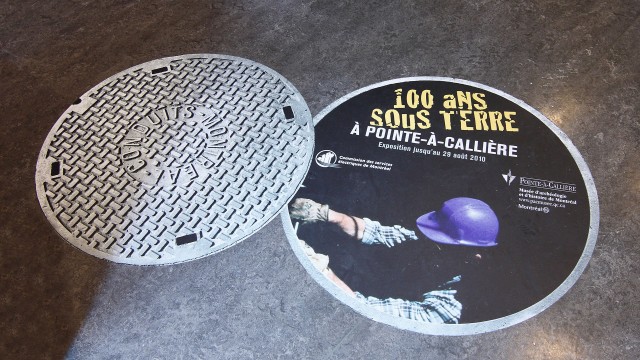Previous exhibition
June 8th, 2010 — November 14th, 2010
Easter Island, An Epic Voyage
From the ends of the earth - Easter island on Montréal island
Inviting visitors to embark on a voyage to discover the fascinating history and culture of the Rapanui people.
This international exhibition, the largest on Easter Island in recent years, will display over 200 pieces from the precious collections of some twenty European and North American lenders. The early Rapanui (Easter Island is now known as Rapa Nui, and its people as Rapanui), reached the island in about 1000 CE. In addition to the famous enormous stone statues, they created a host of other objects, including little-known but fabulous wood carvings, all of them testifying to absolutely remarkable creativity, artistry and technical skills.
For Montrealers and tourists alike, this exhibition will be the perfect opportunity to learn right here in Montréal about the history and culture of the Rapanui, who even today remain the most isolated people on the planet. The nearest inhabited land is 2,100 to 3,600 km away. Getting to Rapanui is truly an epic voyage!
Despite the terrible calamities they suffered, the island’s inhabitants created a unique culture and their own art. The Museum will be presenting a selection of superb pieces from the world’s leading museums. The artifacts have been lent by some twenty institutions, including the American Museum of Natural History, in New York, the British Museum, in London, the Metropolitan Museum of Art, in New York, the Musée du quai Branly, in Paris, the Musée national de la Marine, in Paris, the Museo Missionario Etnologico, in Vatican City, the Museum für Völkerkunde, in Vienna, the Peabody Museum of Archaeology and Ethnology, in Cambridge, Massachusetts, and the Musées royaux d'Art et d'Histoire, in Brussels.

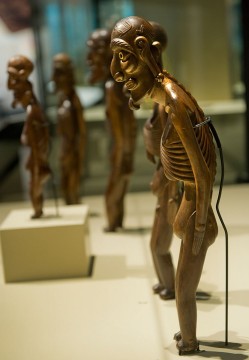
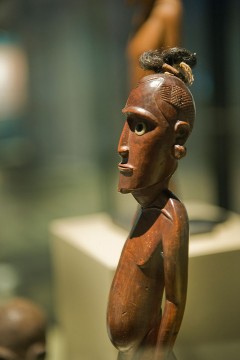
A discovery-filled voyage
Easter Island, a tiny speck of land in the Pacific Ocean some 3,600 km west of Chile, measures just 165 km2: three times smaller than Montréal Island! Yet it is a tremendously important part of world heritage. When Dutch navigator Jakob Roggeveen “discovered” it on Easter Sunday, 1722, he was struck by “this strange island with its enigmatic statues.” But it took several more centuries before archaeologists and ethnologists shed light on the extremely rich and unique Rapanui culture. This very accessible exhibition explains different facts and questions that continue to intrigue scientists.
Visitors will be invited on a journey through space and time on different themes, in an eloquent museographic setting that is bound to impress them with its evocation of the island and the pictures that will whisk them off to Rapa Nui.
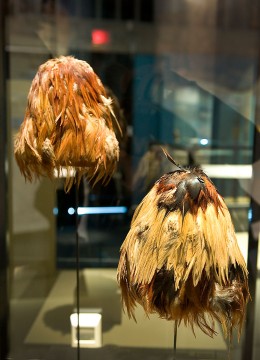
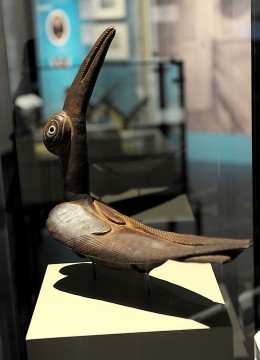
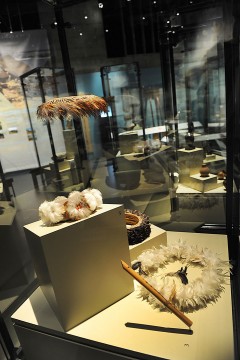
Easter Island – An Epic Voyage, the publication
The 160-page exhibition catalogue, also produced by Pointe-à-Callière, will be an essential introduction to Rapanui culture. It will present all the objects displayed in Montréal and some 100 photographs of Rapa Nui, along with four articles written by leading Easter Island experts: Michel Orliac, archaeologist; Nicolas Cauwe, curator of the Prehistoric and Oceania collections at the Musées royaux d’Art et d’Histoire, in Brussels; Georgia Lee, PhD in Archaeology at UCLA (University of California, Los Angeles), a rock art expert; and Jo Anne Van Tilburg, PhD, Director of the Easter Island Statue Project and Professor at the Cotsen Institute of Archaeology at UCLA. It will be available in both English and French versions at the Museum gift shop.
The Easter Island – An Epic Voyage exhibition, presented from June 8 to November 14, 2010, is being produced and mounted by Pointe-à-Callière, the Montréal Museum of History and Archaeology. The Museum wishes to thank its partners, Scotiabank, Tourisme Montréal, Air Canada Cargo, Canadian Heritage, Astral Media, Historia, Hôtel Intercontinental, Archambault, La Presse, The Gazette and the Consulate General of Chile in Montréal.

